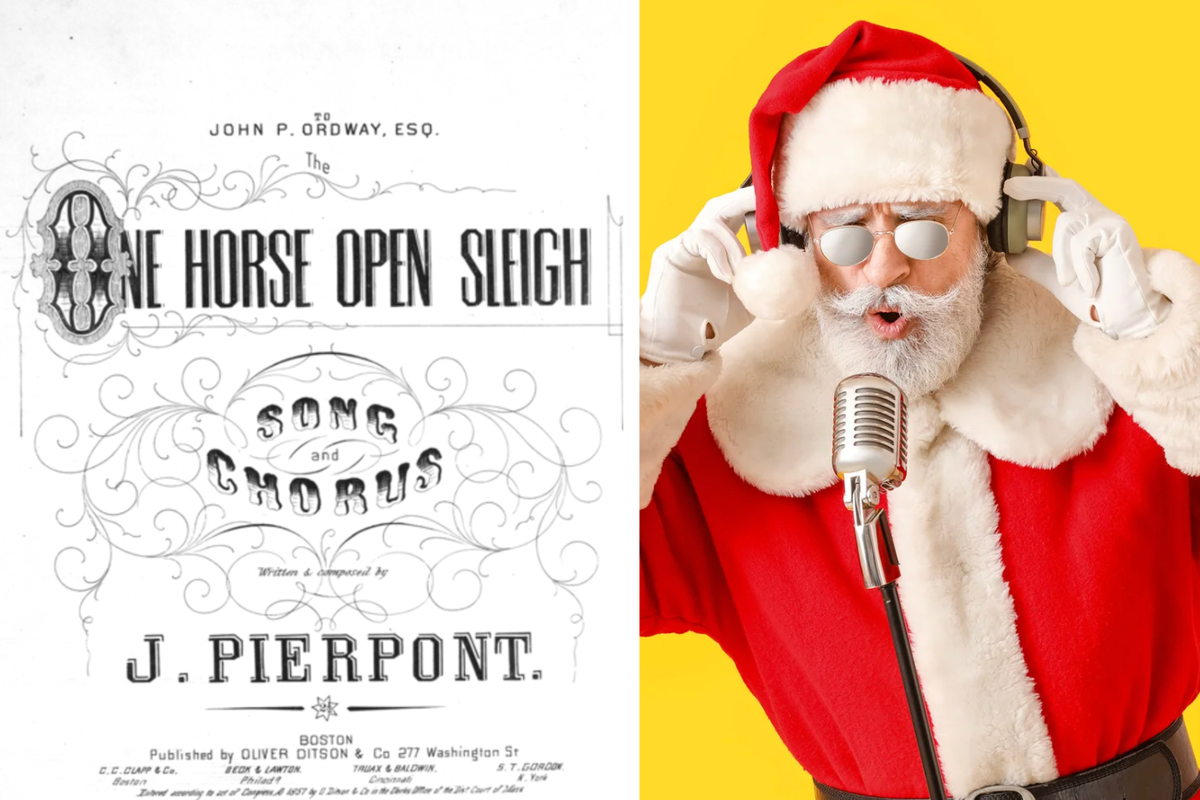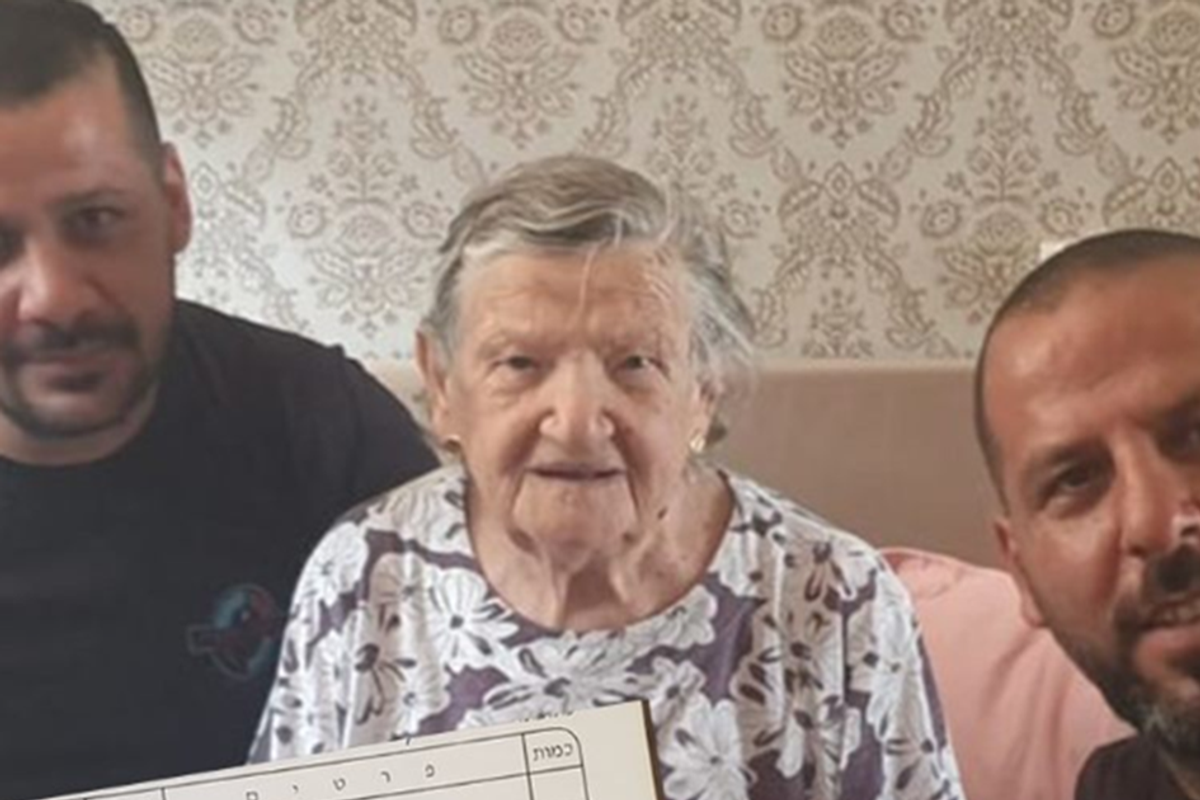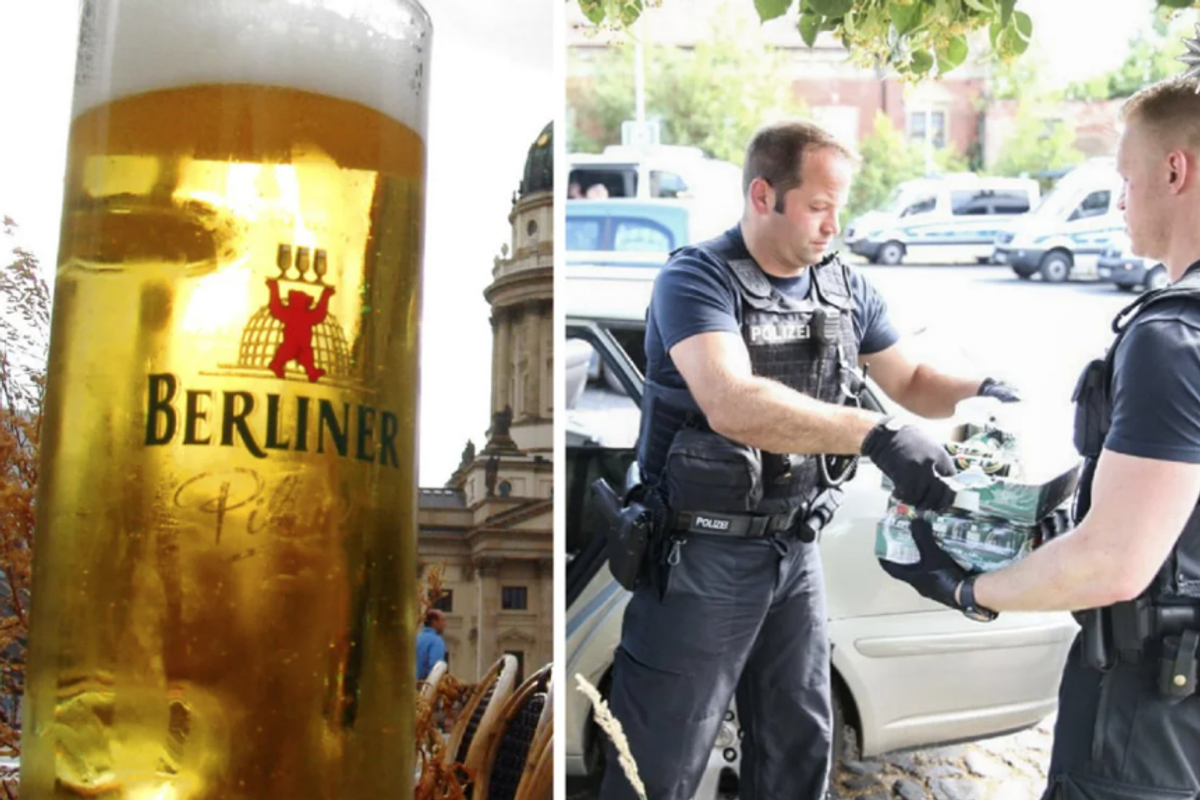The surprising history behind 9 of everyone's favorite Christmas songs
What do you mean "Jingle Bells" was originally a THANKSGIVING song?!

Even if we've heard them a million times, there's still something new to learn and appreciate.
Even the Grinchiest among us probably has a Christmas song that lifts their spirits. After all, we’ve got so much more than traditional carols now—virtually every genre has a tune dedicated to the holiday, religious or otherwise.
In fact, as of 2019 there were an estimated 9,274 songs with the word “Christmas” in the title. And that’s obviously not counting the songs that don’t contain the word “Christmas” but are still very much Christmas songs, like "Rudolph the Red-Nosed Reindeer” and "Frosty the Snowman.”
But did you know that many well known Christmas songs weren’t Christmas songs at all? Or that some have very close ties to war history? Or that some didn’t even become famous until many years later?
Read below for some pretty fascinating stories behind the songs that usher us into those holiday feels…some as early as Oct 25th…
"Jingle Bells"
- YouTubewww.youtube.com
Believe it or not, this festive, well-known Christmas staple was originally written to be sung on Thanksgiving. James Lord Pierpont composed the song, originally named ‘The One Horse Open Sleigh,’ for his Thanksgiving Sunday school class in 1850, so it makes sense that Pierpont’s lyrics contain zero mention of Christmas. They do however celebrate the New England sleigh races that were popular in the era (which is what the jingling bells refer to), and even involve a high-speed crash. Exciting!
Decades later in the 1940s, Bing Crosby removed some of Pierpont’s lyrics, renamed the song ‘Jingle Bells’ and transformed it into a Christmastime hit.
"Silent Night"
- YouTubewww.youtube.com
The year was 1816, not long after the 12 year Napoleonic wars had taken their toll. A young priest in Austria named Joseph Mohr went for a walk seeking inspiration for poetic verses to convey to a traumatized and poverty-stricken congregation that God was still there. As he looked out over the quiet, peaceful winter-laden town, Mohr got his wish.
And then on Christmas Eve in 1818, it was performed for the first time in an Austrian village—a simple acoustic set, played by Mohr and a friend who helped him arrange the music. ‘Silent Night Unplugged,” if you will. It was immediately well received, and quickly traveled throughout northern Europe thanks to traveling folk singers.
Cut to Christmas Truce of 1914 at the height of World War I, when fighting was temporarily suspended along several fronts in Europe so soldiers on both sides could tune their radios to hear Ernestine Schumann Heinke, a beloved Austrian opera star, perform the song. The song’s message of seeking peace even during times of great suffering probably never rang more true.
"Rudolph the Red-Nosed Reindeer"
- YouTubewww.youtube.com
Listen, we know that capitalism has its hold on Christmas. So it’s probably not the biggest surprise that this lovely ditty about misfit cervids was actually created by a corporation.
Robert L. May, a copywriter for Montgomery Ward, was tasked to come up with a children’s storybook that could be sold at Christmas. May, who happened to be a bit of an outcast himself, based much of the book on his own experience of being teased, as well as the classic Ugly Duckling story. According to TIME, the idea almost got shelved, primarily because a focus group was concerned the red nose had “connotations of alcoholism.”
And yet, it was indeed published, and became a bestseller. But it wouldn’t truly become world famous until May's brother-in-law, Johnny Marks, adapted the story into a song. The song was first introduced live on New York Radio in 1949, then was sung by singing cowboy star Gene Autry, and quickly became the first number one song of the 1950s.
Perhaps most important of all, TIME reports that while the success of Rudolph helped May get out of serious debt and put his children through college, he was also grateful to have created something that taught children “tolerance and perseverance can overcome adversity.”
“Christmas Rappin’”
- YouTubewww.youtube.com
Not only did Robert “Rocky” Ford’s idea for a holiday rap song become a Christmas classic, it also helped legitimize hip-hop as a genre. At the time of its debut, 1979, virtually no one even knew what rap was. But once the song achieved crazy commercial success, the industry finally took rap and hip-hop seriously.
The song was performed by Kurtis Blow, who, after the song took off, received a full album contract from Mercury Records, making him the first rapper to land a major label album deal. He later released “The Breaks,” which became the first rap song to go gold. And the rest is music history.
“Feliz Navidad”
- YouTubewww.youtube.com
Christmas can be a time for homesickness, and that was exactly what José Feliciano was feeling in 1970 as he was stuck in a recording studio during the holidays. He longed to celebrate Christmas Eve, aka Noche Buena, with his brothers, eating traditional Puerto Rican foods, drinking rum, and going caroling. In an effort to feel less lonely, he came up with the upbeat and jovial "Feliz Navidad.” Knowing English stations might not play the song with only Spanish lyrics, he added translated lines, making it the timeless, cross cultural hit we love today.
“Carol of the Bells”
- YouTubewww.youtube.com
Again, this popular tune, which is actually a centuries old Ukrainian folk song, was meant for a different holiday—New Year's.
Originally titled “Shchedryk,” derived from a Ukrainian word meaning “bountiful,” the four-note melody tells the story of a swallow flying into a household to proclaim the year of abundance that a family will have. It was one of many well-wishing tunes sung in many Ukrainian villages on Jan. 13 (New Year’s Eve on the Julian calendar), usually by adolescent girls going house to house in celebration of the new year in exchange for baked goods or other treats.
Then, in 1916, Ukrainian composer Mykola Leontovich used the melody to create a song for a Christmas concert, during a time of political upheaval for the country. Leontovich’s creation was hailed a masterpiece. And in 1918, when Ukraine declared independence from the Russian Empire, the song was also used as a diplomatic tool by the newly formed Ukrainian government, which sent a choir of 100 singers on a European tour to sing Ukrainian songs and promote Ukrainian identity around the world.
This of course included the United States, where the song was first performed to a sold-out audience in Carnegie Hall Oct. 5, 1921. When American choir director and arranger Peter Wilhousky eventually he was of bells. So in 1936 he wrote new lyrics and titled it "Carol of the Bells.”
In a time when Ukraine yet again fights for its cultural identity, this one feels pretty poignant to know.
“White Christmas”
- YouTubewww.youtube.com
Crazy to think that this biggest-selling holiday track of all time (not to mention biggest-selling song ever, according to Guinness World Records), initially performed poorly.
It is said that songwriter Irving Berlin, who lost his son on Christmas Day, channeled some of the heartache he felt after visiting his grave each year as he wrote what was supposed to be a song for a Broadway revue that never happened. It did end up making its first appearance in the 1942 musical film Holiday Inn, starring Bing Crosby and Fred Astaire.
At first, "White Christmas" didn’t perform as well as "Be Careful, It’s My Heart," another tune in the movie, but its melancholy lyrics perfectly captured the longing felt by soldiers in World War II, who flooded the Armed Forces Network with requests.
"White Christmas" would end up earning Berlin his first Oscar for Best Original Song in 1943 and changing Christmas music forever, establishing now steep themes of home and nostalgia. It also revealed the huge potential market for secular Christmas songs.
“Christmas (Baby Please Come Home)”
- YouTubewww.youtube.com
Written by Phil Spector, Ellie Greenwich, and Jeff Barry and performed by Darlene Love, this doo-wop holiday song had the ill fortune of being released on November 22, 1963—the same day President John F. Kennedy was assassinated. As Spector said a half-century later. “No one was celebrating anything. There really was not a Christmas that year.” Both the song and the entire album were temporarily pulled from stores.
“Christmas (Baby Please Come Home)” remained in obscurity until the 1980s, when Love once again performed it—and brought the house down—on David Letterman. This started off a tradition that lasted until Christmas 2014, as Letterman retired the next May. Still, Love continued the tradition on The View, which gave the song its all-time chart peak, breaking into Billboard’s Top 20.
“All I Want for Christmas Is You”
- YouTubewww.youtube.com
Can you even write about Christmas songs without covering this one? We think not.
Surprisingly, Mariah Carey was at first hesitant to even create the song that would end up making her Mother Christmas, since she was concerned that a seasonal album would get her written off as a singer past her prime and alienate her hip-hop fans.
“Obviously, I couldn’t have been more wrong,” she would later tell Entertainment Weekly.
Carey made several nods to song producers of Christmas past with this modern day holiday staple, borrowing some of the styles of Phil Spector’s already established seasonal standards and giving herself a Ronette makeover for the music video.
In her 2020 memoir, The Meaning of Mariah Carey, the singer revealed that growing up, her holiday experiences weren’t actually that merry, and thus partially wrote “All I Want for Christmas Is You” as a way to heal her inner child and honor her “early fantasies of family and friendship.”
There you have it folks. So many of these beloved pieces of art were written as a way to find joy no matter what, which in itself is a Christmas lesson, isn’t it? May your holiday listening be that much more impactful knowing how they came to be in the first place.
- How some zoos are using leftover Christmas trees to enrich their elephants' lives. ›
- The viral telling of the first Christmas is back, narrated entirely by adorably clueless kids ›
- A powerful case for why we should only celebrate Christmas every other year. ›
- Monkees silenced critics with amazing Christmas performance - Upworthy ›
- The Monkees 1967 acapella performance silenced their critics - Upworthy ›



 TikTok · Ale
TikTok · Ale
 Women walking down a street.Image via Canva Photos.
Women walking down a street.Image via Canva Photos.  Woman aware of her surroundings in a parking garage. Image via Canva Photos.
Woman aware of her surroundings in a parking garage. Image via Canva Photos.


 Phone charging.
Phone charging. bill nye chemistry GIF by NETFLIX
bill nye chemistry GIF by NETFLIX 
 The Memorial to the Murdered Jews of EuropeBy Alexander Blum - Own work, CC BY-SA 4.0
The Memorial to the Murdered Jews of EuropeBy Alexander Blum - Own work, CC BY-SA 4.0 Move over, Mario Brothers.
Move over, Mario Brothers. 